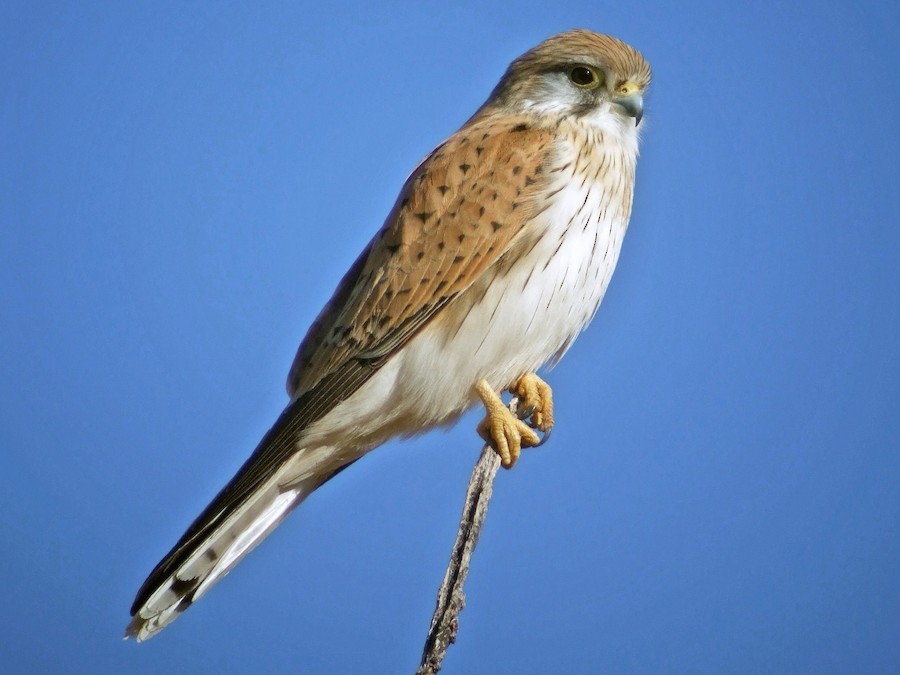The nankeen kestrel (Falco cenchroides), also known as the Australian kestrel, is a raptor native to Australia and New Guinea. It is one of the smallest falcons, and unlike many, does not rely on speed to catch its prey. Instead, it simply perches in an exposed position, but it also has a distinctive technique of hovering over crop and grasslands. to 35 cm (11 to 14 in) long with a wingspan of 66 to 78 cm (26 to 31 in). The male weighs 121 to 195 g (4.3 to 6.9 oz) while the female weighs 115 to 273 g (4.1 to 9.6 oz). It has pale rufous upper-parts with contrasting black flight-feathers and is finely streaked white below, with a black subterminal band. The cere, eye-ring, and legs are yellow. The male has a pale grey crown and tail with a darker grey tear-mark, while the female and juvenile have a pale rufous crown and finely barred rufous tail. Plumage varies considerably in detail, and some birds can look very scruffy, but the slim build, small size and distinctive straight-winged hovering habit make identification easy. Preferred habitats are lightly wooded areas and open agricultural regions and tend to be absent from dense forests. The Nankeen Kestrel's success as a bird of prey can be largely contributed to its tolerance for a wide variety of habitats and its ability to feed on a variety of foods and nest in a range of sites. The Nankeen Kestrel's diet is varied. It mainly feeds on small mammals, reptiles, small birds and a variety of insects. Prey is located from a perch or by hovering a short distance above the ground on rapid wing-beats, using its fan-shaped tail as a rudder and keeping the head and body kept still. This bird is mostly preyed upon by larger birds of prey, and any medium to large mammal that can get the jump on them. Especially noisy during breeding season, when commonest call is shrill keek-keek-keek. Here is a link so you can listen to this bird too.
